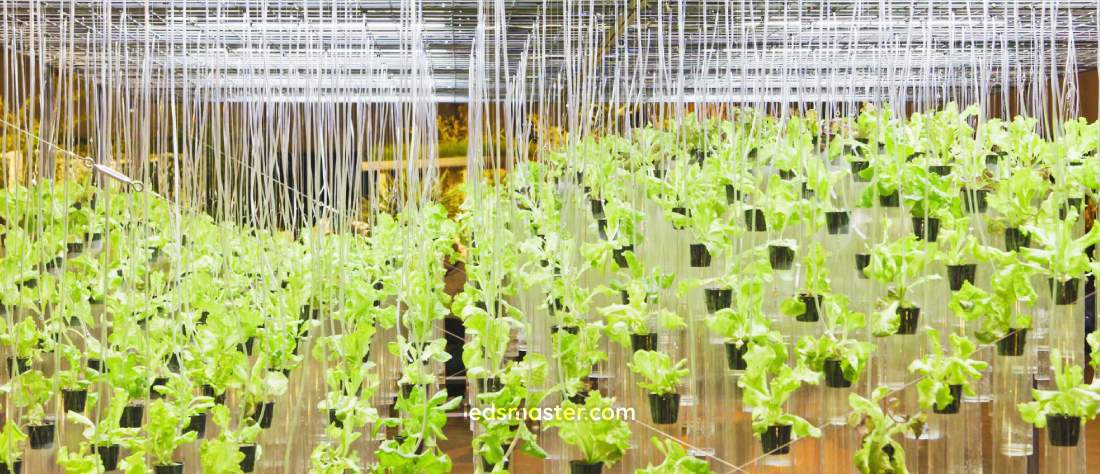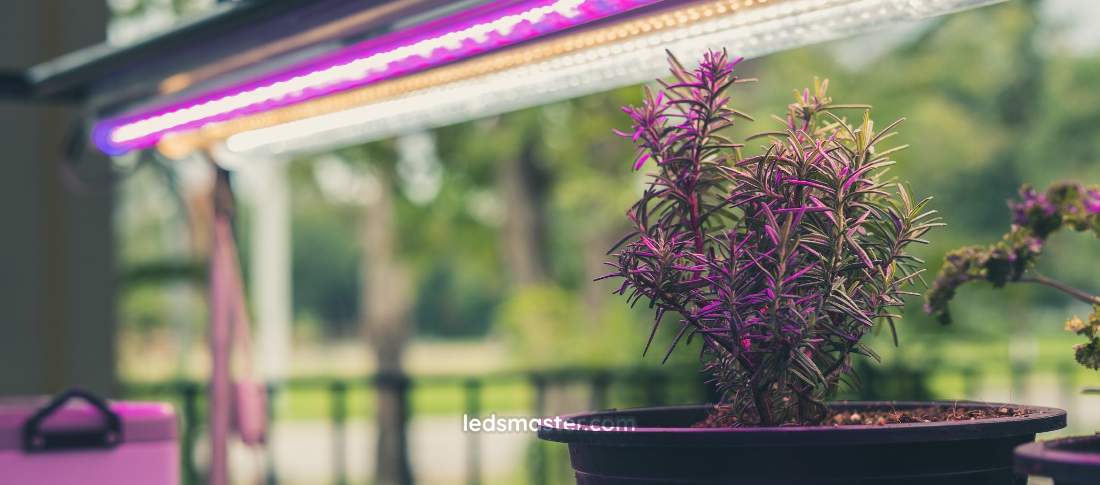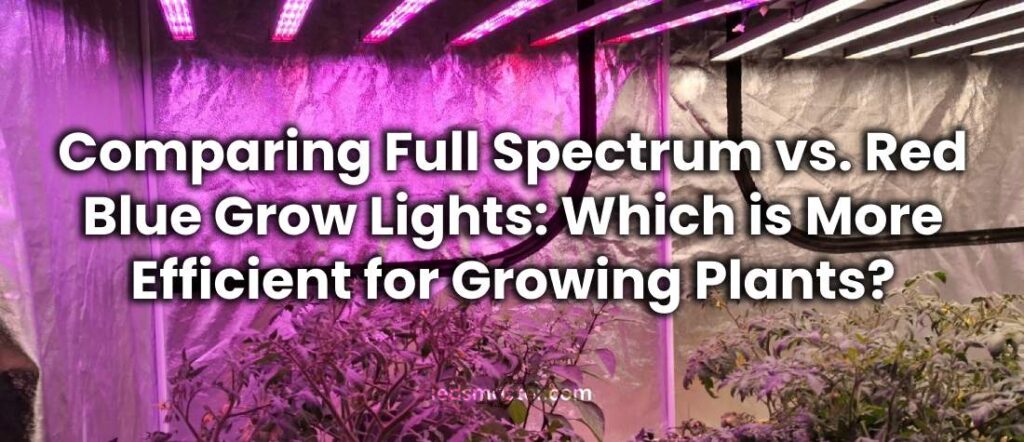As indoor gardening and controlled-environment agriculture continue to grow in popularity, the choice of lighting for plant growth has become a critical consideration for both amateur and professional growers. Two prominent types of grow lights—full spectrum and red-blue LED grow lights—offer distinct advantages and drawbacks. Understanding the differences between these lighting technologies can help gardeners make informed decisions to optimize plant health, growth, and yield. This article delves into the comparison between full spectrum and red-blue grow lights, evaluating their efficiency and effectiveness in promoting plant growth.
Table of Contents
ToggleFull Spectrum Grow Lights

Comprehensive Light Spectrum
Full spectrum grow lights are designed to mimic natural sunlight by providing a broad range of wavelengths, including those across the visible spectrum as well as some UV and infrared light. These lights aim to deliver a complete light spectrum that plants use throughout their various growth stages, from seedling to flowering. The concept behind full spectrum lighting is that it closely replicates the sun’s natural light, which can potentially lead to healthier plants and improved growth.
Versatility Across Growth Stages
One of the key advantages of full spectrum grow lights is their versatility. They are effective across all stages of plant growth, providing the necessary light for photosynthesis, which is crucial for plant development. This broad spectrum of light can enhance plant growth, improve chlorophyll production, and lead to robust foliage and strong root systems. Furthermore, because full spectrum lights simulate natural sunlight, they can help plants maintain a more natural growth pattern, which is particularly beneficial for photoperiod-sensitive plants that rely on specific light cues to initiate flowering.
Red-Blue Grow Lights

Targeted Wavelengths for Efficient Growth
Red-blue grow lights, also known as two-spectrum or bi-spectrum lights, focus primarily on the red and blue wavelengths of the light spectrum. These wavelengths are crucial for photosynthesis and are used to target specific aspects of plant growth. Red light, typically in the range of 600-700 nm, promotes flowering and fruiting, while blue light, generally around 400-500 nm, supports vegetative growth and helps in the development of strong stems and leaves.
Energy Efficiency and Cost Effectiveness
One of the main advantages of red-blue grow lights is their efficiency. By concentrating on the most critical wavelengths for plant growth, these lights can deliver high-intensity light where it is needed most. This targeted approach often results in more efficient use of energy and can lead to faster growth and higher yields. Red-blue grow lights are also typically more affordable than full spectrum options, making them a popular choice for budget-conscious growers.
Limitations and Specific Use Cases
However, red-blue grow lights come with their own set of limitations. Since they do not provide a full spectrum of light, they may not support all aspects of plant growth as effectively as full spectrum lights. For example, the lack of green light in the spectrum can sometimes lead to less vibrant plant coloration and potentially less efficient photosynthesis. Additionally, the specific focus on red and blue wavelengths means that these lights may not be as versatile, potentially requiring growers to switch lights or adjust their lighting strategy as plants transition through different growth stages.
Plant-Specific Lighting Requirements
When choosing grow lights, understanding the specific lighting requirements of different plants is crucial for optimizing their growth and maximizing yield. Each type of grow light—full spectrum or red-blue—has unique benefits and limitations that cater to different plant needs.
Full Spectrum Lights
Full spectrum lights are designed to provide a broad range of wavelengths, closely mimicking natural sunlight. This wide spectrum supports various stages of plant growth, making these lights suitable for a diverse array of plants. For leafy greens and herbs, such as lettuce and basil, full spectrum lights offer the balanced light necessary for robust foliage and overall plant health. These plants benefit from the comprehensive range of wavelengths, which supports their consistent growth and development. Similarly, flowering plants, including tomatoes and peppers, also thrive under full spectrum lights as they provide the necessary light for both vegetative growth and the flowering stages, leading to healthier blooms and fruit.
Red-Blue Grow Lights
On the other hand, red-blue grow lights focus primarily on the red and blue wavelengths of the spectrum. Blue light is particularly beneficial for promoting vegetative growth, making it ideal for plants that require strong, healthy leaves and stems, such as spinach and kale. The enhanced blue light supports the development of dense foliage and robust plant structures. Red light, which is crucial for the flowering and fruiting phases, supports plants like cucumbers and strawberries that need a strong bloom phase. While red-blue lights are effective in these specific growth stages, they do not provide the full spectrum of light. As a result, they might not address all the needs of plants that also benefit from green light, which can affect certain aspects of growth and overall plant health.
Impact on Plant Quality and Yield
The choice of grow lights affects not just the quantity of the yield but also the overall quality of the plants produced. Each type of lighting influences various attributes of plant growth, impacting the final product in significant ways.
Enhancing Plant Quality and Uniformity
Grow lights that replicate natural sunlight generally contribute to improved plant quality. By offering a broad spectrum of light, these lights support a more natural growth pattern, leading to healthier and more robust plants. For many crops, this results in enhanced color, flavor, and aroma. For example, herbs grown under such lights often develop more intense flavors and aromas compared to those grown with other types of lighting. Additionally, flowers and fruits may exhibit richer colors and better taste due to the balanced light spectrum. The uniform and comprehensive light range provided helps ensure consistent growth and minimizes the risk of abnormalities.
Focusing on Growth Stages and Yield Optimization
In contrast, grow lights that emphasize specific wavelengths can be highly effective in boosting growth during particular stages, such as flowering and fruit production. These lights can lead to larger and more abundant yields by providing the necessary wavelengths that promote these stages. However, the limited spectrum may not support all aspects of plant health. For instance, the lack of certain wavelengths can result in less vibrant plant coloration and may impact the overall health of the plants. Plants grown under such lights might also have less intense flavors or aromas, as some wavelengths are crucial for complete photosynthesis and chlorophyll production. The absence of a full spectrum can occasionally lead to deficiencies in growth or quality.
Efficiency and Effectiveness in Plant Growth
When evaluating the efficiency and effectiveness of full spectrum versus red-blue grow lights, it is important to consider the specific needs of the plants being grown. Full spectrum lights are often favored for their ability to provide a balanced light environment that can support all stages of plant growth. This comprehensive approach can be particularly beneficial for indoor gardens that aim to cultivate a variety of plants simultaneously or those that require a more natural light cycle.
On the other hand, red-blue grow lights are highly effective for optimizing specific growth stages. For instance, during the vegetative phase, blue light is crucial for promoting healthy leaf and stem growth, while red light becomes more important during the flowering phase to encourage blooming and fruit production. Growers who focus on these specific growth stages may find red-blue grow lights to be more efficient and cost-effective, as they can deliver targeted light to maximize growth and yield.
Cost Considerations and Long-Term Benefits
The cost of grow lights is a significant factor for many gardeners. Full spectrum lights, particularly high-quality LED options, tend to be more expensive both upfront and in terms of ongoing energy consumption. However, their versatility and the potential for improved plant health and yield may justify the higher cost for some growers. The broader spectrum of light can also reduce the need for additional lighting adjustments or changes as plants progress through different growth stages.
Red-blue grow lights generally have a lower initial cost and can be more energy-efficient due to their targeted spectrum. This can result in lower electricity bills and a quicker return on investment. However, the limited spectrum might necessitate the use of additional lighting solutions or adjustments over time, which could offset some of the initial cost savings. Additionally, while red-blue lights can be highly effective for specific growth phases, they may not support the full range of plant needs as comprehensively as full spectrum options.
Conclusion
Full spectrum lights mimic natural sunlight, supporting all plant growth stages and improving overall plant quality and uniformity. They are versatile but can be more expensive and less energy-efficient. Red-blue grow lights, on the other hand, focus on specific wavelengths that enhance growth phases like flowering and fruiting. They are more energy-efficient and cost-effective but may not support all aspects of plant health due to their limited spectrum. The best choice depends on the plants’ needs and the grower’s goals.

